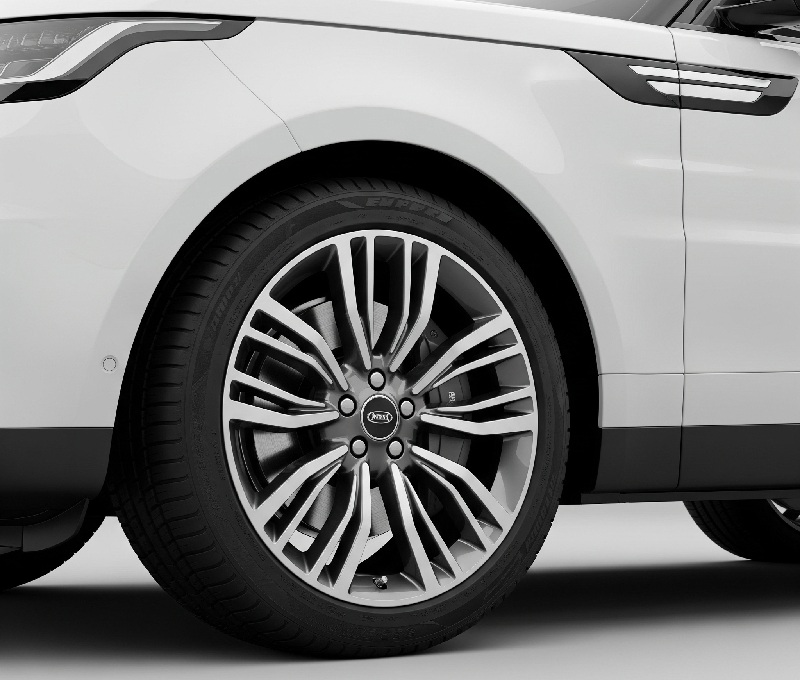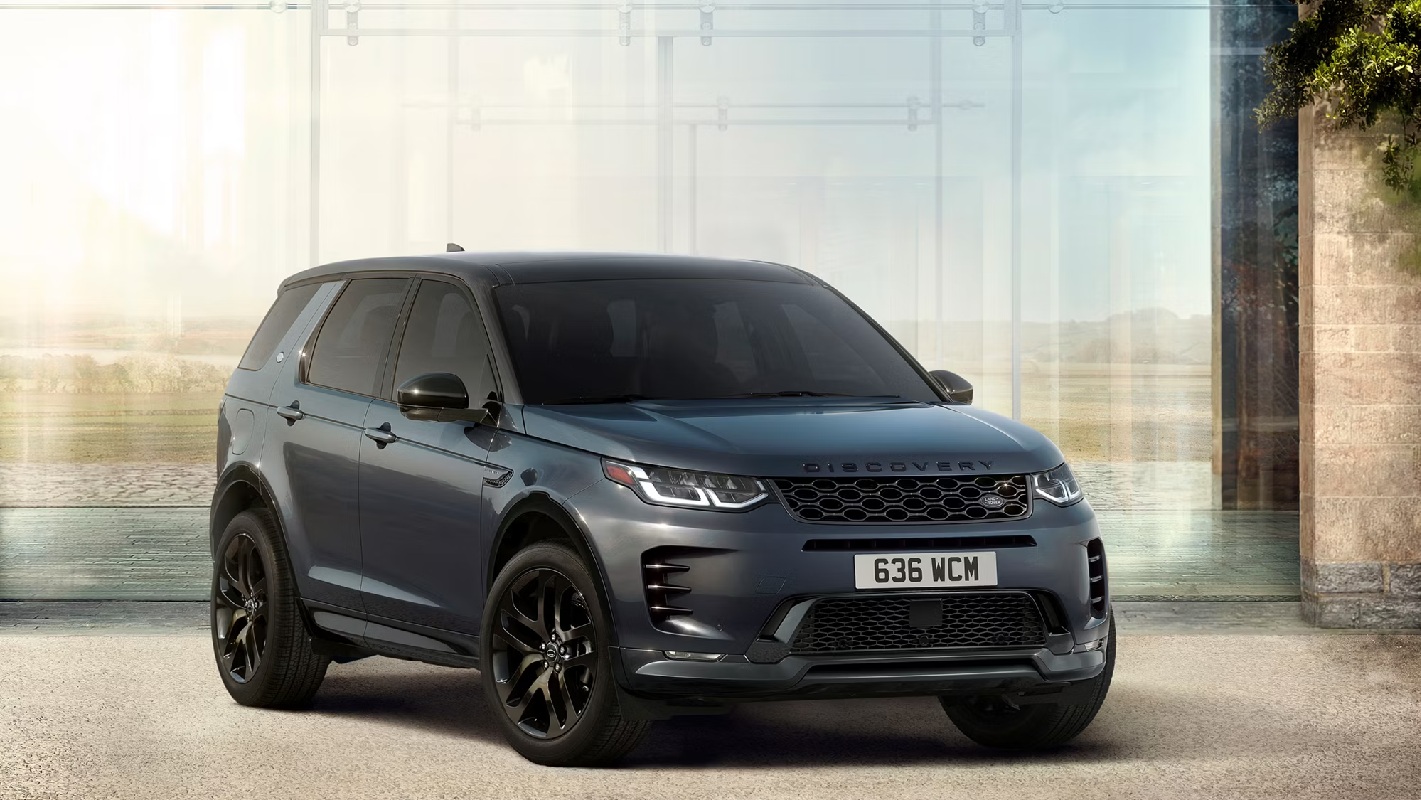The Land Rover Defender has long been an icon in the world of off-road vehicles, known for its rugged capability and versatile design. With the introduction of the Defender 130, Land Rover has expanded its lineup to cater to those seeking even more space and functionality.

The Defender 130 Dimensions
The Defender 130 is the longest variant in the current Defender lineup. However, it’s important to note that the 130 doesn’t have a 130-inch wheelbase despite its name. Let’s break down the key dimensions:
- Wheelbase: 119 inches (3,022 mm) – identical to the Defender 110
- Overall Length: 211.7 inches (5,358 mm) – 13.4 inches longer than the 110
- Height: 77.6 inches (1,970 mm)
- Width (including mirrors): 87.8 inches (2,231 mm)
The crucial point is that the Defender 130 maintains the same wheelbase as the 110 model. The additional length comes from an extended rear overhang, significantly impacting the vehicle’s design and capabilities.
Design Implications of the Extended Rear
The decision to keep the wheelbase unchanged while extending the rear has several implications for the Defender 130 design:
- Familiar Front Profile: From the front, the Defender 130 is nearly indistinguishable from its 110 counterpart, maintaining the iconic Defender look.
- Extended Roofline: The roof extends further back, creating a more wagon-like silhouette distinctive from other Defender models.
- Larger Rear Doors: The rear doors are slightly longer, improving access to the third row of seats.
- Unique Rear Design: The extended rear overhang necessitates a redesigned rear end, with a more upright tailgate and distinctive LED taillights.
- Body-Coloured C-Pillar: To balance the extended length visually, Land Rover has incorporated a body-coloured C-pillar, a departure from the traditional Defender design language.
Impact on Interior Space and Functionality
The extended rear overhang of the Defender 130 translates to significant gains in interior space:
- Three-Row Seating: The 130 can accommodate up to eight passengers in a 2+3+3 configuration or seven with optional second-row captain’s chairs.
- Cargo Capacity: The 130 offers 389 liters of cargo space with all seats in place. With the second and third rows folded, this expands to a cavernous 2,516 liters.
- Third-Row Comfort: The additional length allows for a more spacious third row, suitable for adult passengers on longer journeys.
- Flexible Interior: The ability to fold individual seats in the second and third rows provides numerous configurations for balancing passenger and cargo needs.
Performance and Handling Characteristics
While the Defender 130 maintains the same wheelbase as the 110, its extended length and additional weight do impact its performance and handling:
- Weight Distribution: The added rear overhang shifts more weight behind the rear axle, which can affect the vehicle’s balance, particularly in off-road situations.
- Turning Circle: Despite the unchanged wheelbase, the longer body results in a slightly larger turning circle of 12.84 meters, compared to 12.8 meters for the 110.
- Off-Road Capability: The extended rear reduces the departure angle to 28.5 degrees (compared to 40 degrees for the 110), which may limit the ability in extreme off-road scenarios.
- On-Road Dynamics: The additional length and weight (up to 2,586 kg DIN) can make it feel more substantial on the road, potentially affecting its agility in urban environments.
- Engine Options: Land Rover offers robust engine options, including a 3.0-liter inline-six mild hybrid (P400) and a potent 5.0-liter supercharged V8 in some markets to compensate for the increased size and weight.
Practical Considerations for Owners
The unique dimensions bring both advantages and challenges for potential owners:
- Parking: At over 5.3 meters long, finding suitable parking spaces, especially in urban areas, may be more challenging.
- Garage Fit: Prospective buyers should measure their garages carefully, as the 130 may not fit in spaces designed for standard-length SUVs.
- Fuel Efficiency: The increased size and weight can impact fuel consumption. For example, the P400 engine is rated at 27.2 mpg (8.6 L/100km) combined in the UK market.
- Towing Capacity: Despite its size, the 130 maintains impressive towing capabilities. Its maximum braked towing capacity is 3,000 kg (6,613 lbs) for most engine variants.
- Roof Load: The 130 can support a maximum dynamic roof load of 168 kg (370 lbs), making it suitable for roof tents and extensive gear storage.
Specialized Variants: The Defender 130 Outbound
Land Rover has introduced a specialized variant called the Defender 130 Outbound, which capitalizes on the extended wheelbase for adventure-focused buyers:
- Removal of Third Row: The Outbound eliminates the third-row seats to maximize cargo space.
- Rugged Interior: Features include durable rubber flooring and additional tie-down points.
- Exterior Modifications: Body-colored rear panels replace the rear side windows, enhancing the vehicle’s utilitarian aesthetic.
- Increased Cargo Volume: The Outbound offers up to 2,516 liters of cargo space with the rear seats folded.
This variant demonstrates Land Rover’s recognition of the diverse needs within the Defender community, catering to those who prioritize cargo capacity over passenger seating.
Market Positioning and Competition
The Defender 130 enters a niche market of extended-length premium SUVs:
- Luxury Segment: It competes with vehicles like the Mercedes-Benz GLS and BMW X7, offering a more rugged alternative with genuine off-road credentials.
- Off-Road Capable: In the adventure-oriented segment, it stands alongside vehicles like the Toyota Land Cruiser 300 Series (where available) and high-end Jeep Grand Cherokee L versions.
- Unique Proposition: The combination of luxury, off-road capability, and extended length sets it apart in the market. It appeals to buyers who need space but don’t want to compromise on the iconic design and capability.
Land Rover Defender 130: Form and Function
The Land Rover Defender 130 balances maintaining the core identity and expanding its functionality. Land Rover has created a vehicle that offers significantly more interior space without dramatically altering the fundamental character of the Defender and off-road prowess by extending the rear overhang rather than the wheelbase.
This approach has some compromises, particularly regarding angle and overall maneuverability. However, for many buyers, the added practicality of the three-row setup or the vast cargo area in the Outbound variant will outweigh these considerations.
The Defender 130 is not just a stretched 110; it’s a thoughtfully designed extension of the Defender range that opens up new possibilities for adventurous families, outdoor enthusiasts, and those who simply need more space without sacrificing capability or style. As Land Rover continues to evolve the Defender lineup, the 130 stands as a testament to the brand’s commitment to versatility and innovation within the constraints of an iconic design.
Whether tackling urban jungles or actual jungles, the Defender 130 extended wheelbase ensures it can carry more people and gear to the adventure, cementing its place as a unique offering in the luxury SUV market.


